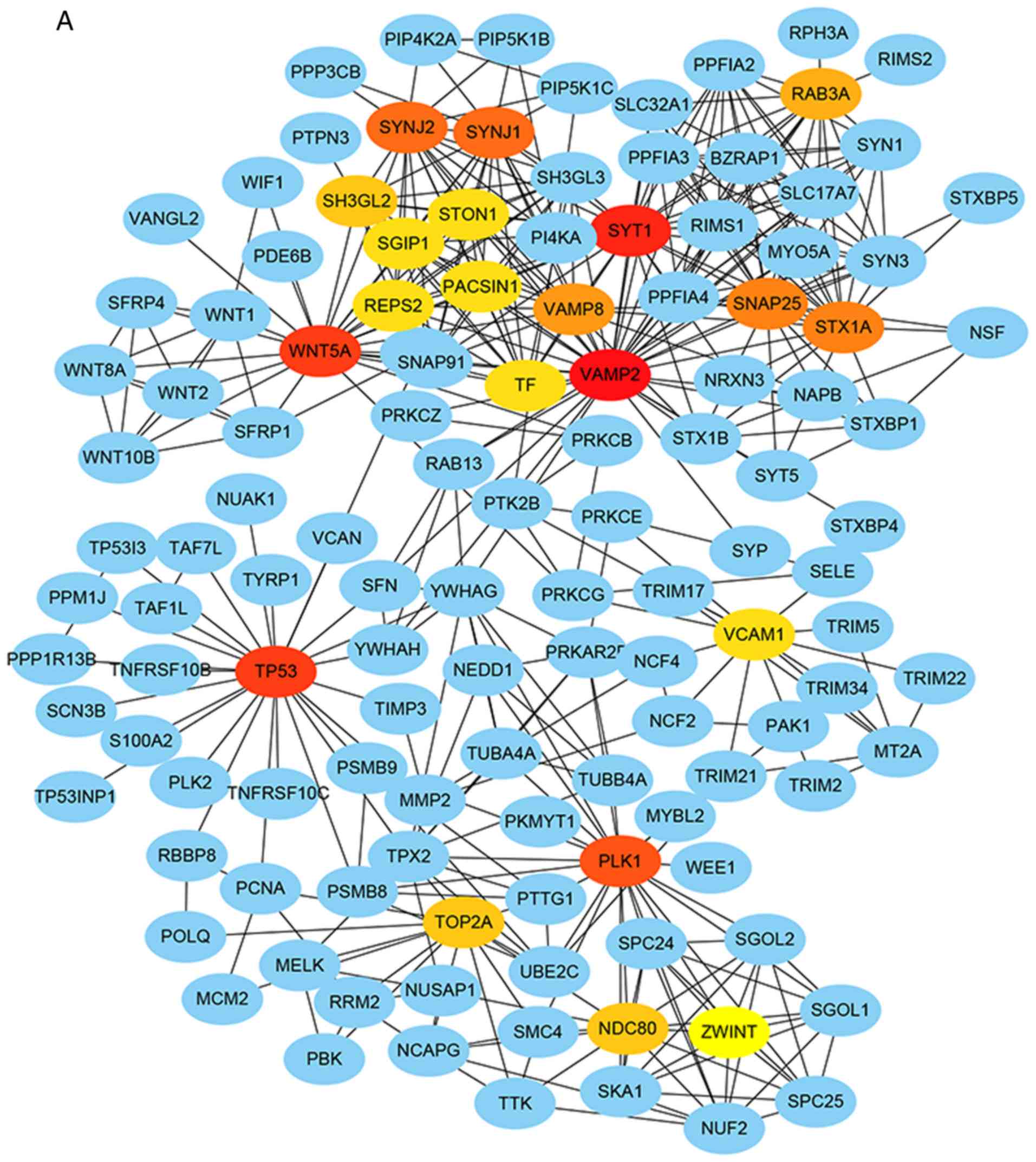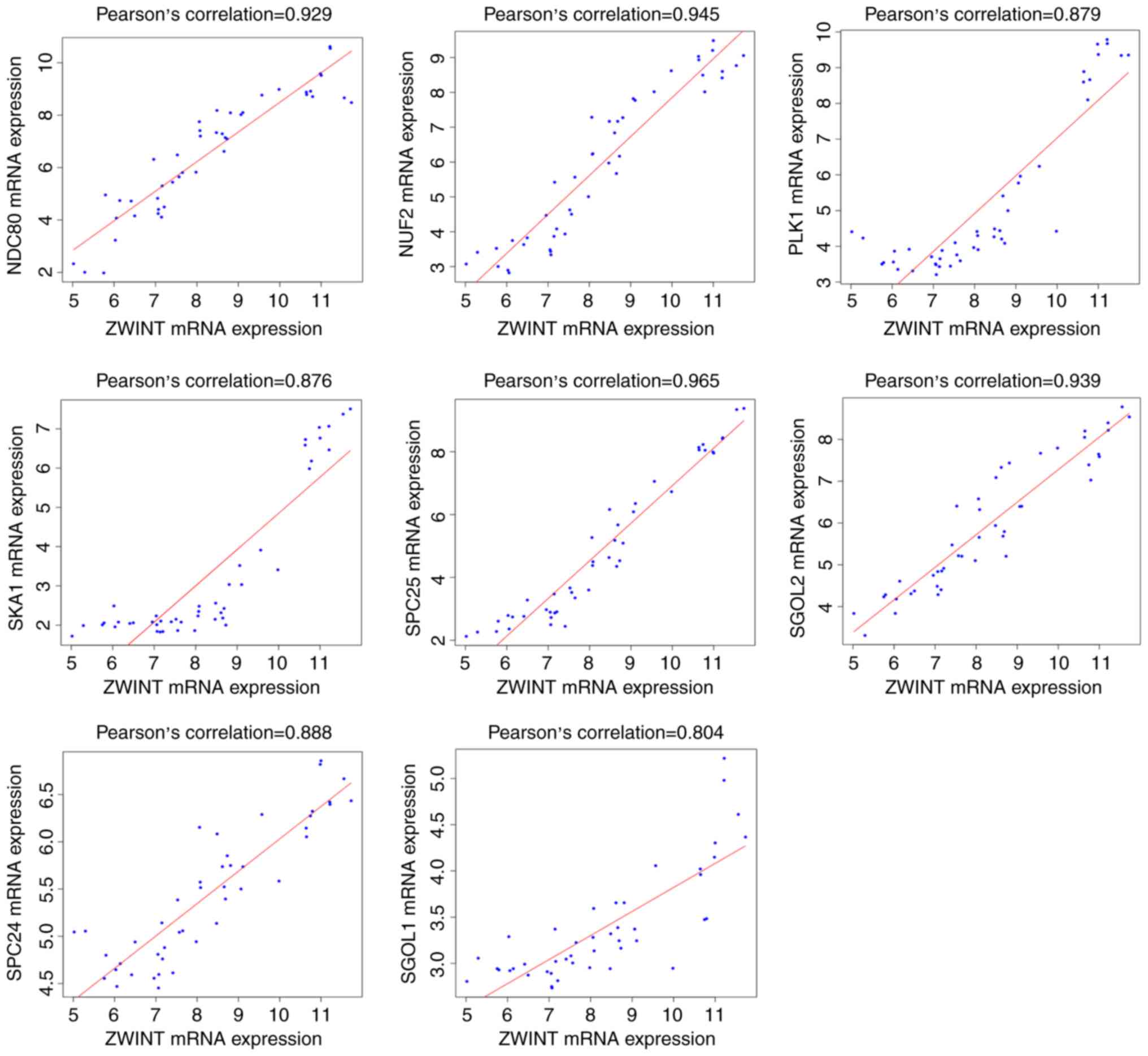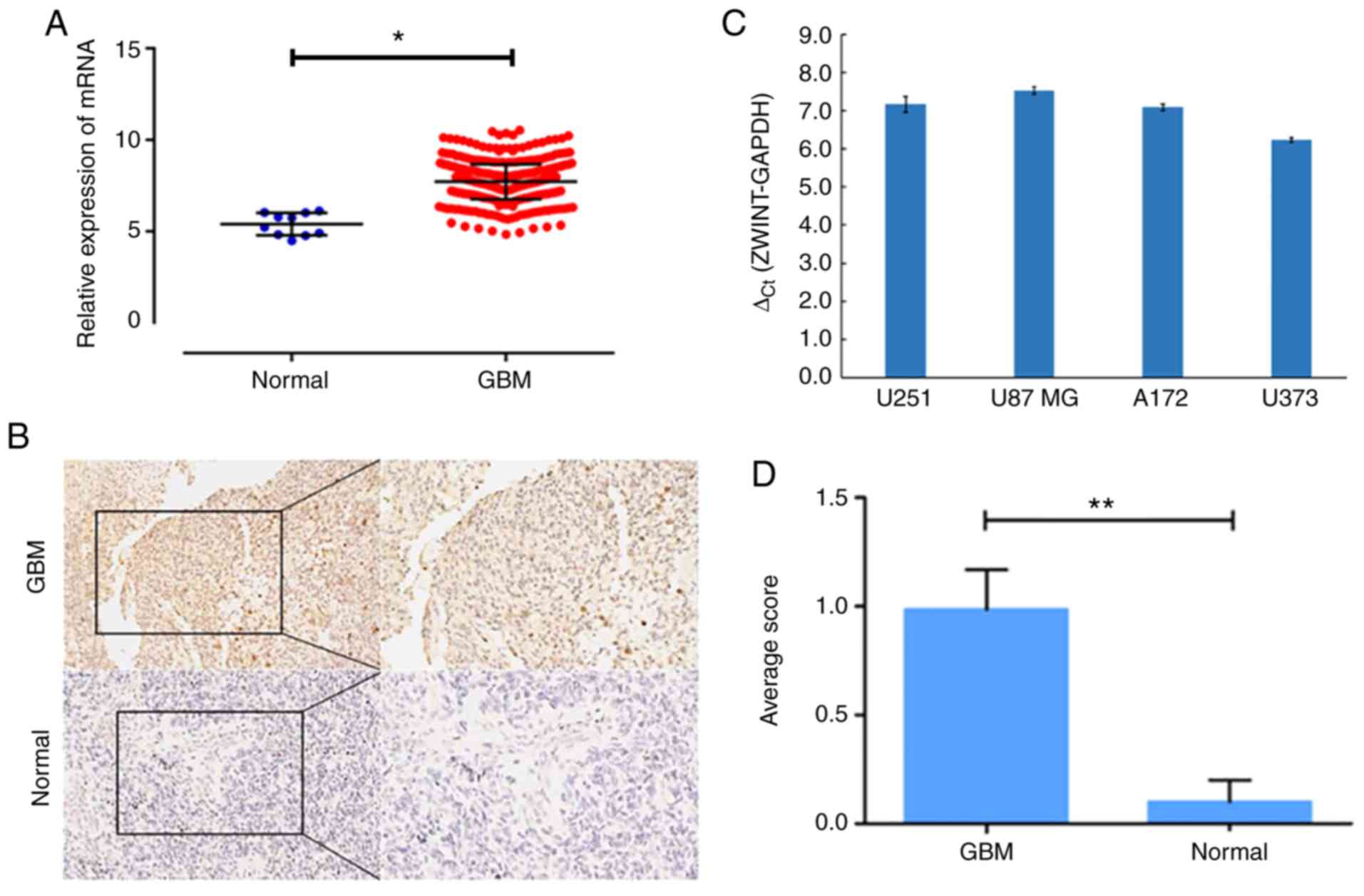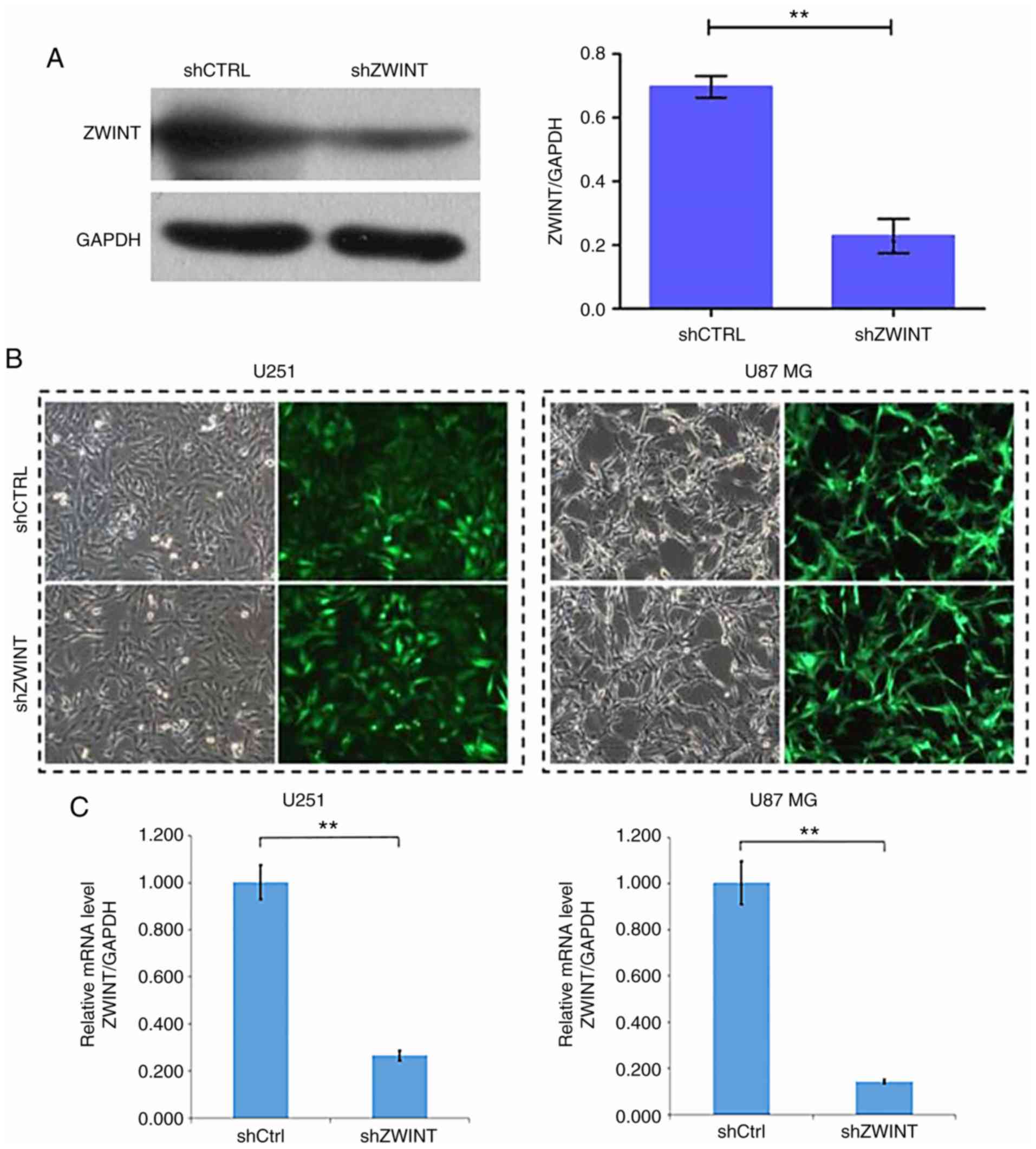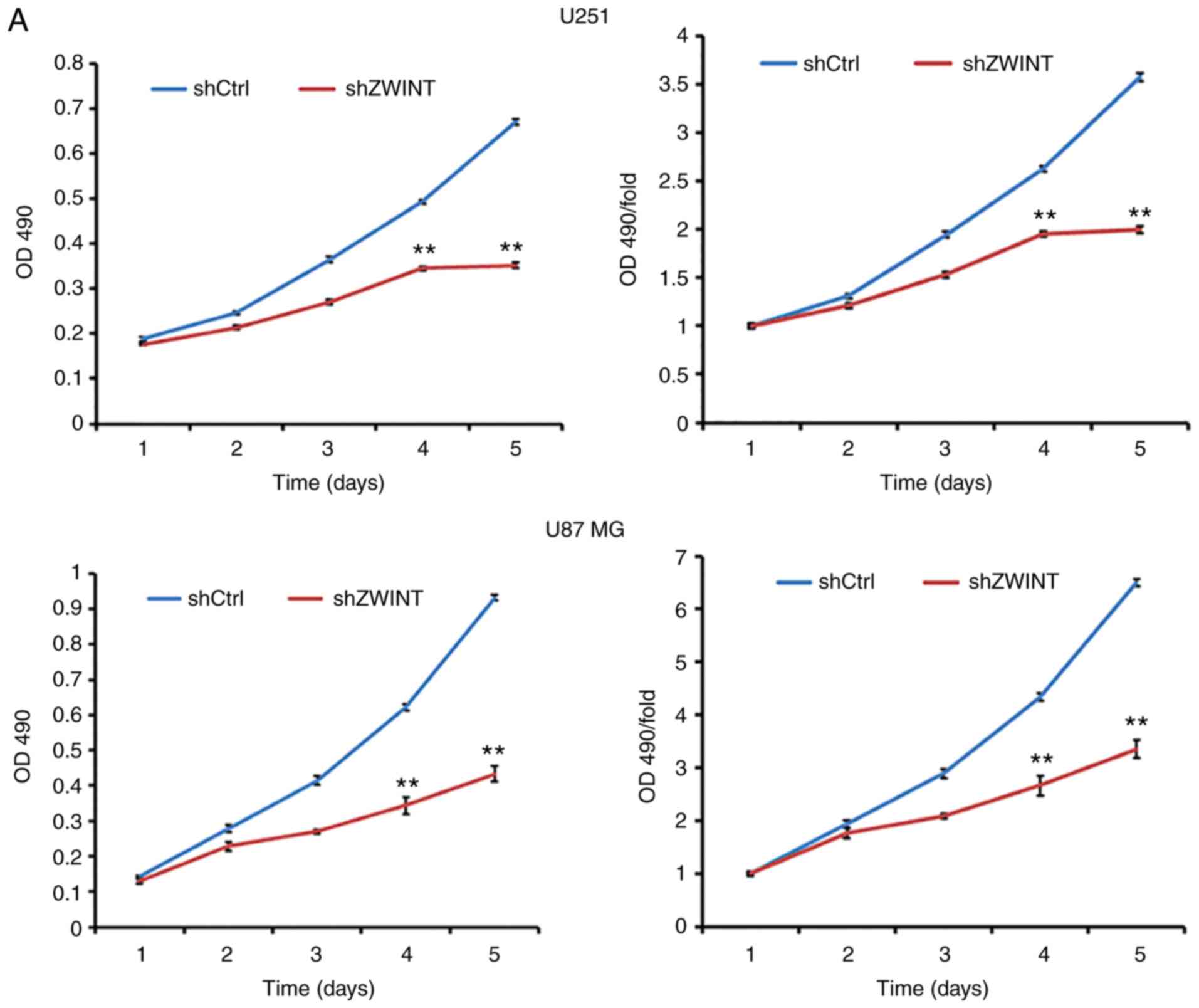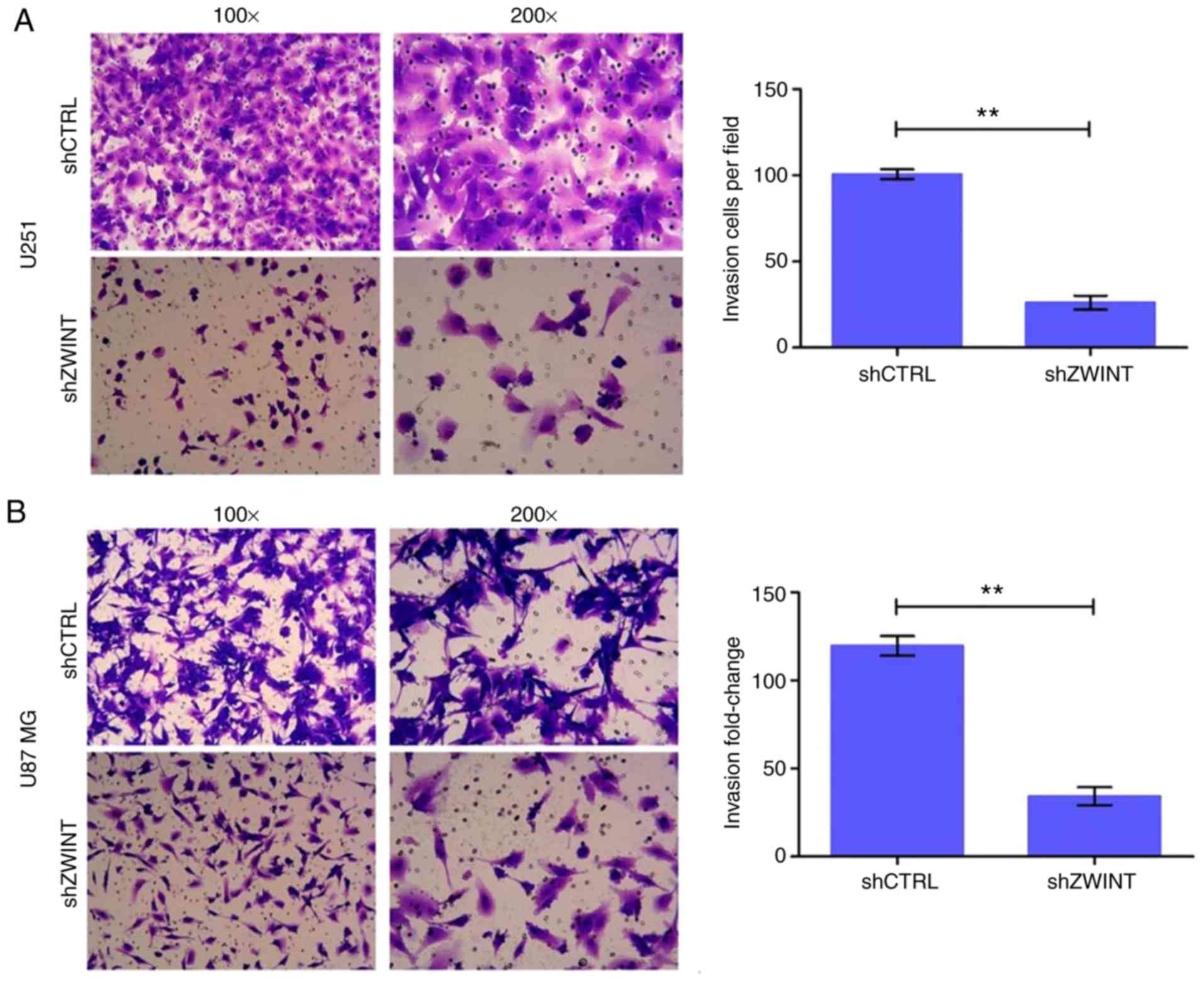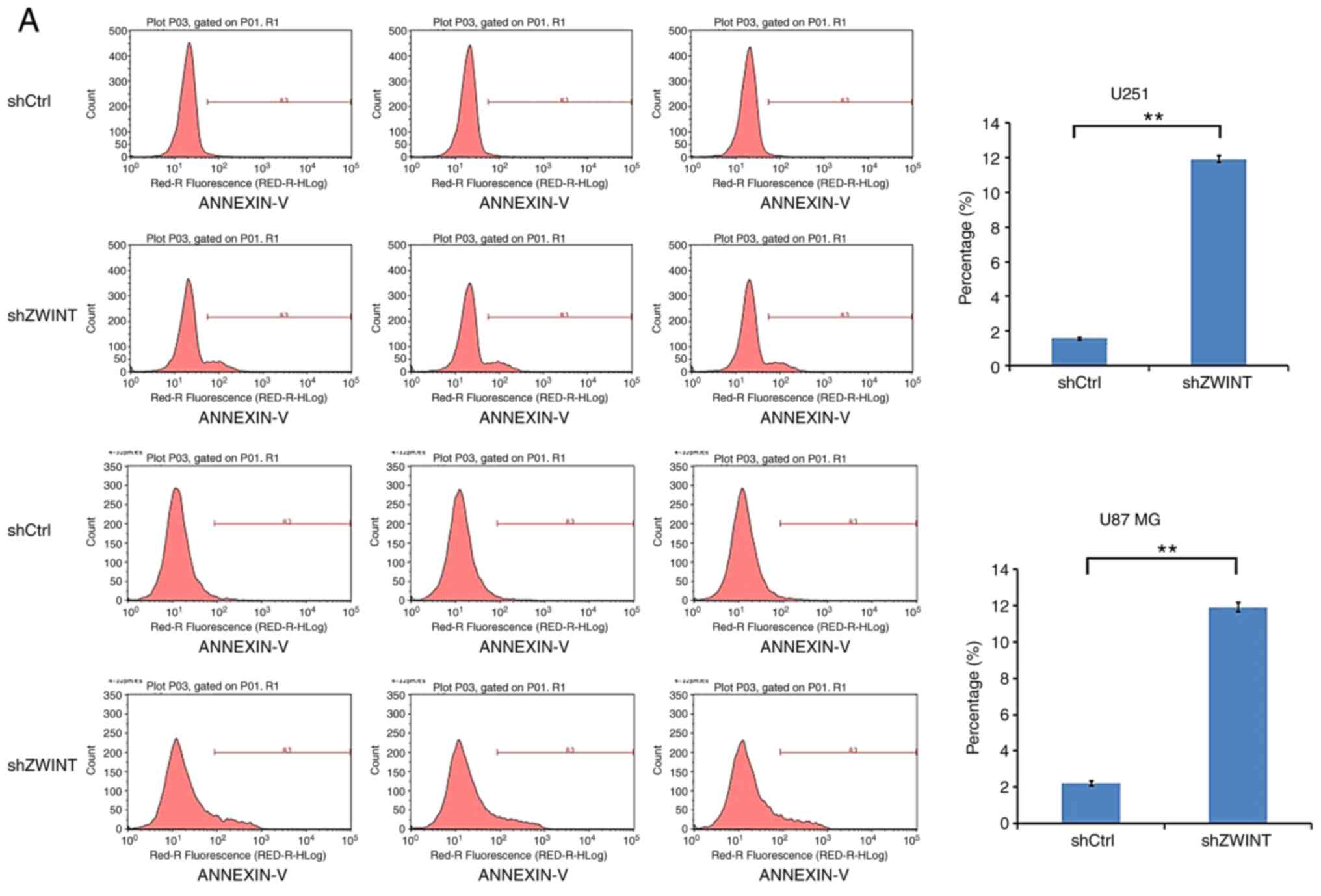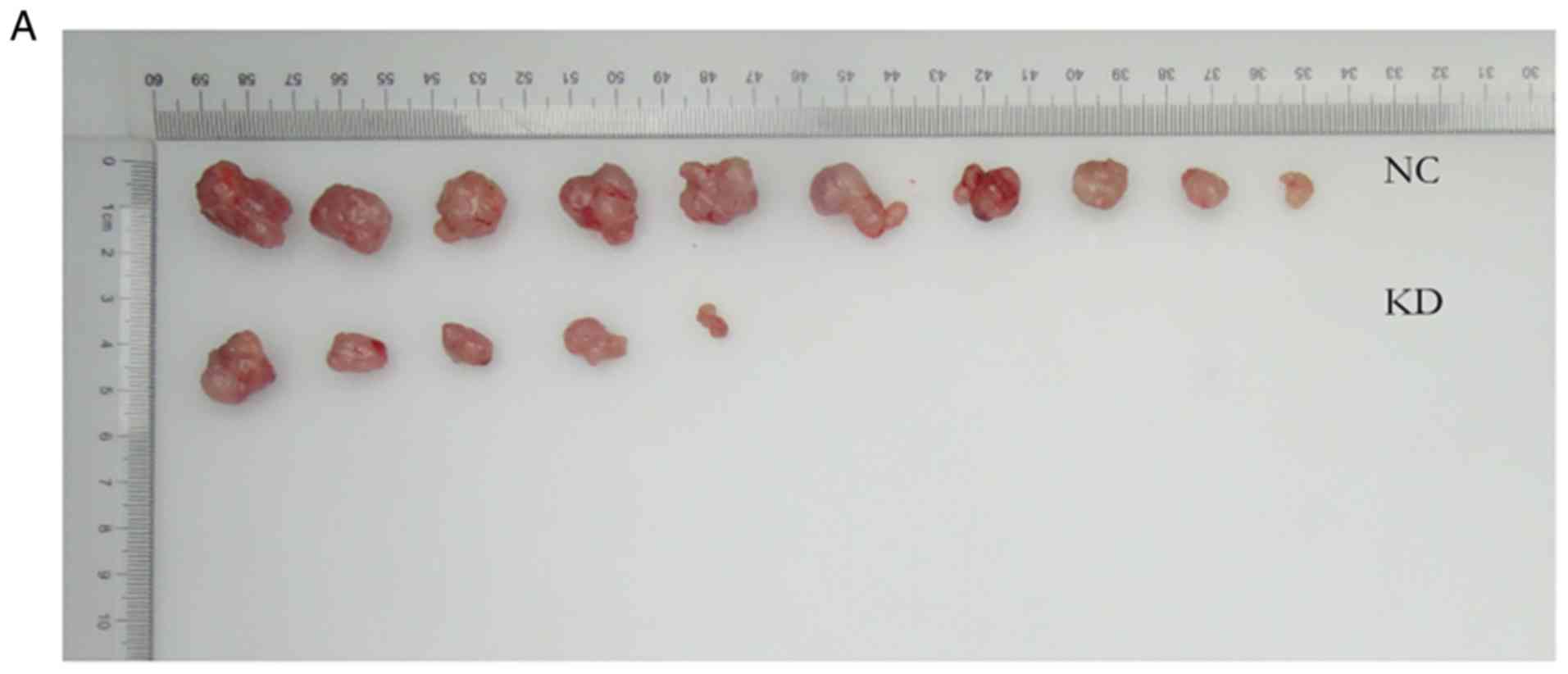|
1
|
Liebelt BD, Shingu T, Zhou X, Ren J, Shin
SA and Hu J: Glioma stem cells: Signaling, microenvironment, and
therapy. Stem Cells Int. 2016:78498902016. View Article : Google Scholar : PubMed/NCBI
|
|
2
|
Biedermann J, Preussler M, Conde M,
Peitzsch M, Richter S, Wiedemuth R, Abou-El-Ardat K, Krüger A,
Meinhardt M, Schackert G, et al: Mutant IDH1 differently affects
redox state and metabolism in glial cells of normal and tumor
origin. Cancers (Basel). 11(pii): E20282019. View Article : Google Scholar : PubMed/NCBI
|
|
3
|
Chai RC, Zhang KN, Chang YZ, Wu F, Liu YQ,
Zhao Z, Wang KY, Chang YH, Jiang T and Wang YZ: Systematically
characterize the clinical and biological significances of 1p19q
genes in 1p/19q non-codeletion glioma. Carcinogenesis.
40:1229–1239. 2019. View Article : Google Scholar : PubMed/NCBI
|
|
4
|
Asif S, Fatima R, Krc R, Bennett J and
Raza S: Comparative proteogenomic characterization of glioblastoma.
CNS Oncol. 8:CNS372019. View Article : Google Scholar : PubMed/NCBI
|
|
5
|
Endo H, Ikeda K, Urano T, Horie-Inoue K
and Inoue S: Terf/TRIM17 stimulates degradation of kinetochore
protein ZWINT and regulates cell proliferation. J Biochem.
151:139–144. 2012. View Article : Google Scholar : PubMed/NCBI
|
|
6
|
Starr DA, Saffery R, Li Z, Simpson AE,
Choo KH, Yen TJ and Goldberg ML: HZwint-1, a novel human
kinetochore component that interacts with HZW10. J Cell Sci.
113:1939–1950. 2000.PubMed/NCBI
|
|
7
|
Famulski JK, Vos L, Sun X and Chan G:
Stable hZW10 kinetochore residency, mediated by hZwint-1
interaction, is essential for the mitotic checkpoint. J Cell Biol.
180:507–520. 2008. View Article : Google Scholar : PubMed/NCBI
|
|
8
|
Peng F, Li Q, Niu SQ, Shen GP, Luo Y, Chen
M and Bao Y: ZWINT is the next potential target for lung cancer
therapy. J Cancer Res Clin Oncol. 145:661–673. 2019. View Article : Google Scholar : PubMed/NCBI
|
|
9
|
Yang XY, Wu B, Ma SL, Yin L, Wu MC and Li
AJ: Decreased expression of ZWINT is associated with poor prognosis
in patients with HCC after surgery. Technol Cancer Res Treat.
17:15330338187941902018. View Article : Google Scholar : PubMed/NCBI
|
|
10
|
Ying H, Xu Z, Chen M, Zhou S, Liang X and
Cai X: Overexpression of Zwint predicts poor prognosis and promotes
the proliferation of hepatocellular carcinoma by regulating
cell-cycle-related proteins. Onco Targets Ther. 11:689–702. 2018.
View Article : Google Scholar : PubMed/NCBI
|
|
11
|
Kumar S, Clarke D and Gerstein MB:
Leveraging protein dynamics to identify cancer mutational hotspots
using 3D structures. Proc Natl Acad Sci USA. 116:18962–18970. 2019.
View Article : Google Scholar : PubMed/NCBI
|
|
12
|
Ding J, McConechy MK, Horlings HM, Ha G,
Chun Chan F, Funnell T, Mullaly SC, Reimand J, Bashashati A, Bader
GD, et al: Systematic analysis of somatic mutations impacting gene
expression in 12 tumour types. Nat Commun. 6:85542015. View Article : Google Scholar : PubMed/NCBI
|
|
13
|
Deng M, Brägelmann J, Schultze JL and
Perner S: Web-TCGA: An online platform for integrated analysis of
molecular cancer data sets. BMC Bioinformatics. 17:722016.
View Article : Google Scholar : PubMed/NCBI
|
|
14
|
Johann PD, Jäger N, Pfister SM and Sill M:
RF_Purify: A novel tool for comprehensive analysis of tumor-purity
in methylation array data based on random forest regression. BMC
Bioinformatics. 20:4282019. View Article : Google Scholar : PubMed/NCBI
|
|
15
|
Shivakumar M, Lee Y, Bang L, Garg T, Sohn
KA and Kim D: Identification of epigenetic interactions between
miRNA and DNA methylation associated with gene expression as
potential prognostic markers in bladder cancer. BMC Med Genomics.
10 (Suppl 1):S302017. View Article : Google Scholar
|
|
16
|
Cooper LA, Demicco EG, Saltz JH, Powell
RT, Rao A and Lazar AJ: PanCancer insights from the cancer genome
atlas: The pathologist's perspective. J Pathol. 244:512–524. 2018.
View Article : Google Scholar : PubMed/NCBI
|
|
17
|
Robinson MD, McCarthy DJ and Smyth GK:
edgeR: A bioconductor package for differential expression analysis
of digital gene expression data. Bioinformatics. 26:139–140. 2010.
View Article : Google Scholar : PubMed/NCBI
|
|
18
|
McCarthy DJ, Chen Y and Smyth GK:
Differential expression analysis of multifactor RNA-Seq experiments
with respect to biological variation. Nucleic Acids Res.
40:4288–4297. 2012. View Article : Google Scholar : PubMed/NCBI
|
|
19
|
Grzmil M, Morin PJ Jr, Lino MM, Merlo A,
Frank S, Wang Y, Moncayo G and Hemmings BA: MAP kinase-interacting
kinase 1 regulates SMAD2-dependent TGF-β signaling pathway in human
glioblastoma. Cancer Res. 71:2392–2402. 2011. View Article : Google Scholar : PubMed/NCBI
|
|
20
|
Gautier L, Cope L, Bolstad BM and Irizarry
RA: Affy-analysis of affymetrix GeneChip data at the probe level.
Bioinformatics. 20:307–315. 2004. View Article : Google Scholar : PubMed/NCBI
|
|
21
|
Li Z, Zhao K and Tian H: Integrated
analysis of differential expression and alternative splicing of
non-small cell lung cancer based on RNA sequencing. Oncol Lett.
14:1519–1525. 2017. View Article : Google Scholar : PubMed/NCBI
|
|
22
|
Huang da W, Sherman BT and Lempicki RA:
Systematic and integrative analysis of large gene lists using DAVID
bioinformatics resources. Nat Protoc. 4:44–57. 2009. View Article : Google Scholar : PubMed/NCBI
|
|
23
|
Szklarczyk D, Franceschini A, Wyder S,
Forslund K, Heller D, Huerta-Cepas J, Simonovic M, Roth A, Santos
A, Tsafou KP, et al: STRING v10: Protein-protein interaction
networks, integrated over the tree of life. Nucleic Acids Res.
43((Database Issue)): D447–D452. 2015. View Article : Google Scholar : PubMed/NCBI
|
|
24
|
Franz M, Lopes CT, Huck G, Dong Y, Sumer O
and Bader GD: Cytoscape.js: A graph theory library for
visualisation and analysis. Bioinformatics. 32:309–311.
2016.PubMed/NCBI
|
|
25
|
Chin CH, Chen SH, Wu HH, Ho CW, Ko MT and
Lin CY: cytoHubba: Identifying hub objects and sub-networks from
complex interactome. Bmc Syst Biol. 8 (Suppl 4):S112014. View Article : Google Scholar : PubMed/NCBI
|
|
26
|
Livak KJ and Schmittgen TD: Analysis of
relative gene expression data using real-time quantitative PCR and
the 2(-Delta Delta C(T)) method. Methods. 25:402–408. 2001.
View Article : Google Scholar : PubMed/NCBI
|
|
27
|
Visconti R, Della Monica R and Grieco D:
Cell cycle checkpoint in cancer: A therapeutically targetable
double-edged sword. J Exp Clin Cancer Res. 35:1532016. View Article : Google Scholar : PubMed/NCBI
|
|
28
|
Cheeseman IM and Desai A: Molecular
architecture of the kinetochore-microtubule interface. Nat Rev Mol
Cell Biol. 9:33–46. 2008. View Article : Google Scholar : PubMed/NCBI
|
|
29
|
Varma D and Salmon ED: The KMN protein
network-chief conductors of the kinetochore orchestra. J Cell Sci.
125:5927–5936. 2012. View Article : Google Scholar : PubMed/NCBI
|
|
30
|
Obuse C, Iwasaki O, Kiyomitsu T, Goshima
G, Toyoda Y and Yanagida M: A conserved Mis12 centromere complex is
linked to heterochromatic HP1 and outer kinetochore protein
Zwint-1. Nat Cell Biol. 6:1135–1141. 2004. View Article : Google Scholar : PubMed/NCBI
|
|
31
|
Lin YT, Chen Y, Wu G and Lee WH: Hec1
sequentially recruits Zwint-1 and ZW10 to kinetochores for faithful
chromosome segregation and spindle checkpoint control. Oncogene.
25:6901–6914. 2006. View Article : Google Scholar : PubMed/NCBI
|
|
32
|
Woo Seo D, Yeop You S, Chung WJ, Cho DH,
Kim JS and Su Oh J: Zwint-1 is required for spindle assembly
checkpoint function and kinetochore-microtubule attachment during
oocyte meiosis. Sci Rep. 5:154312015. View Article : Google Scholar : PubMed/NCBI
|
|
33
|
Ju LL, Chen L, Li JH, Wang YF, Lu RJ, Bian
ZL and Shao JG: Effect of NDC80 in human hepatocellular carcinoma.
World J Gastroenterol. 23:3675–3683. 2017. View Article : Google Scholar : PubMed/NCBI
|
|
34
|
Xing XK, Wu HY, Chen HL and Feng HG: NDC80
promotes proliferation and metastasis of colon cancer cells. Genet
Mol Res. 15:2016. View Article : Google Scholar :
|
|
35
|
Xu B, Wu DP, Xie RT, Liu LG and Yan XB:
Elevated NDC80 expression is associated with poor prognosis in
osteosarcoma patients. Eur Rev Med Pharmacol Sci. 21:2045–2053.
2017.PubMed/NCBI
|
|
36
|
Matsuo Y, Maurer SP, Surrey T and Toda T:
Purification and characterisation of the fission yeast Ndc80
complex. Protein Expr Purif. 135:61–69. 2017. View Article : Google Scholar : PubMed/NCBI
|
|
37
|
Valverde R, Ingram J and Harrison SC:
Conserved tetramer junction in the kinetochore Ndc80 complex. Cell
Rep. 17:1915–1922. 2016. View Article : Google Scholar : PubMed/NCBI
|
|
38
|
Suzuki A, Badger BL and Salmon ED: A
quantitative description of Ndc80 complex linkage to human
kinetochores. Nat Commun. 6:81612015. View Article : Google Scholar : PubMed/NCBI
|
|
39
|
Ferrara M, Sessa G, Fiore M, Bernard F,
Asteriti IA, Cundari E, Colotti G, Ferla S, Desideri M, Buglioni S,
et al: Small molecules targeted to the microtubule-Hec1 interaction
inhibit cancer cell growth through microtubule stabilization.
Oncogene. 37:231–241. 2018. View Article : Google Scholar : PubMed/NCBI
|
|
40
|
Liao Y, Lin D, Cui P, Abbasi B, Chen C,
Zhang Z, Zhang Y, Dong Y, Rui R and Ju S: Polo-like kinase 1
inhibition results in misaligned chromosomes and aberrant spindles
in porcine oocytes during the first meiotic division. Reprod Domest
Anim. 53:256–265. 2018. View Article : Google Scholar : PubMed/NCBI
|
|
41
|
Ma X, Wang L, Huang D, Li Y, Yang D, Li T,
Li F, Sun L, Wei H, He K, et al: Polo-like kinase 1 coordinates
biosynthesis during cell cycle progression by directly activating
pentose phosphate pathway. Nat Commun. 8:15062017. View Article : Google Scholar : PubMed/NCBI
|
|
42
|
Sivakumar S and Gorbsky GJ:
Phosphatase-regulated recruitment of the spindle- and
kinetochore-associated (Ska) complex to kinetochores. Biol Open.
6:1672–1679. 2017. View Article : Google Scholar : PubMed/NCBI
|
|
43
|
Zhao LJ, Yang HL, Li KY, Gao YH, Dong K,
Liu ZH, Wang LX and Zhang B: Knockdown of SKA1 gene inhibits cell
proliferation and metastasis in human adenoid cystic carcinoma.
Biomed Pharmacother. 90:8–14. 2017. View Article : Google Scholar : PubMed/NCBI
|
|
44
|
Wang K, Sun J, Teng J, Yu Y, Zhong D and
Fan Y: Overexpression of spindle and kinetochore-associated protein
1 contributes to the progression of prostate cancer. Tumour Biol.
39:10104283177019182017. View Article : Google Scholar : PubMed/NCBI
|















